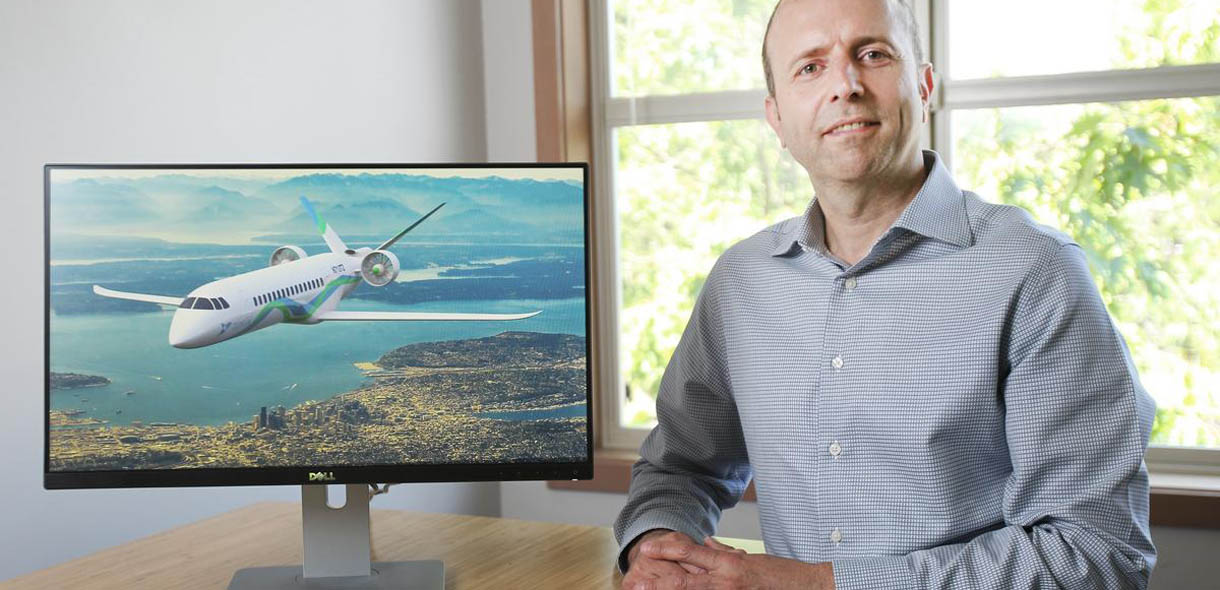
 Ashish Kumar will illustration of Zunum Aero electric fanliner c
Ashish Kumar will illustration of Zunum Aero electric fanliner c
Zunum Aero: The Race to Bring Commercial Aviation to All
Imagine you're boarding a small, 12-passenger airliner in McCook, Nebraska. The year is 2027 and the pilot not only helps you board the plane, she also stows your luggage in the baggage compartment and then during the short 45-minute flight to Denver, serves you a soda and pretzels.
Meanwhile, in a control center on the perimeter of DIA in the shadow of the Rockies, dozens of Fight Managers, many ex-service personnel who formerly flew US military drones, each oversee a half dozen autonomously-assisted airliners just like the one about to depart McCook. While the "command pilot" monitors the plane from the single-seat cockpit, particularly during taxi operations, both humans are only there to reassure the passengers and the FAA. Most of the thousands of flights that day are computer-controlled pretty much from startup to engine shutdown. Even the pleasant, yet efficient, female voice that communicates with ATC is really just synthetic AI. In fact, every ship in this particular carrier's fleet has its own unique voice and name. The McCook plane is known as Vicki and has a bit of a New England accent.
That's the future for which Zunum Aero's CEO Ashish Kumar and his 70-member team are developing their short haul airliner. With an $800K grant from the State of Washington and investments from Boeing and JetBlue, they are building the first series hybrid electric airliner to be propelled by twin ducted fans similar to AirBus E-Fan.
Unlike Eviation's "Alice", which will be an all-electric airliner competing for the same short-haul market of trips under 500 miles, Zunum's similar butterfly-tailed twin will be a series hybrid. A gas turbine mounted in the tail of the aircraft will spin an electric generator that will feed power to the twin electric ducted fans in flight. Lithium batteries in the wings will give the plane the extra power it needs for take-off and climb, the most energy consuming part of the flight. While on the ground during turn-arounds, the batteries will be fast charged or possibly "hot swapped" with freshly charged one to shorten ground time. Each plane will seat up to 12 with plans for larger versions as electric propulsion technology improves.
Initially, they will be flown by two pilots with the goal being to eventually reduce this to one and then, assuming future AI allows and FAA approves, possibly no pilots. As Kumar notes, this isn't all that far from where we are today. The vast majority of all modern commercial and corporate airplanes are computer controlled already. The pilots program their routes into the onboard autopilot prior to departure and other than taxi operations, they fly pretty much hands off, only adjusting their course as ATC and weather dictates.
Zunum expects to be flying their production version early in the 2020s with technology verification phases between then and now. Next year they hope to have a flying test bed using an existing airframe. Eventually they'll merge the new butterfly tail airframe with small turboprops, which then will be replaced by the ducted fan motors. Commercial deliveries should start around 2022, Kumar anticipates.
We covered a lot of ground in this 40+ minute interview, roughly the time it would take for that flight from McCook to DIA. You can listen to it in its entirety using the embedded MP3 player below, or by downloading it for playback on your personal audio device.

First Published: 2018-05-21
Pages Viewed: 25436

EV WORLD.COM
Future In Motion™ Podcast
Ashish Kumar
The Complete MP3 File Is Available to Patron Supporters